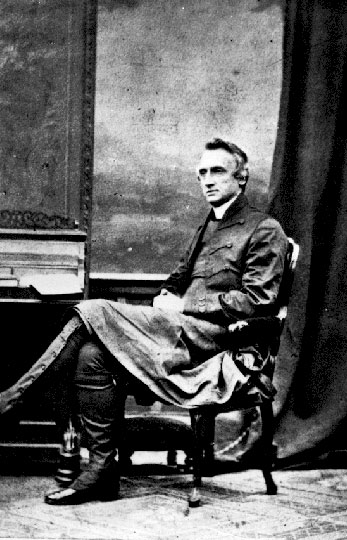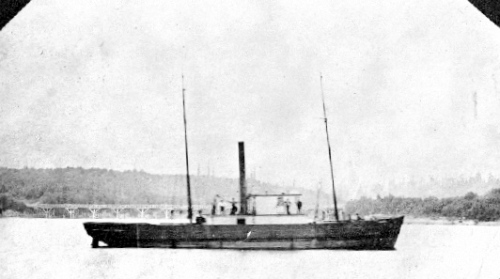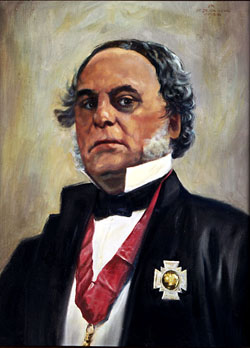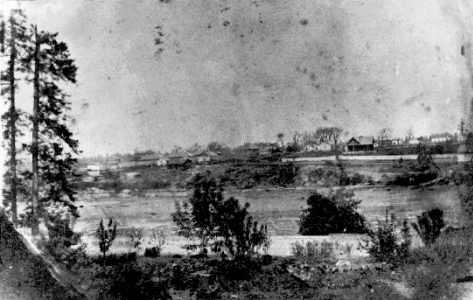Religion played an important role in the society of colonial Victoria. Perhaps the most important, and well known and controversial church men of the colony was Bishop Edward Cridge. A fixture in early Victoria, Cridge first arrived on the island as the first chaplain of the HBC Fort. Islander author Leonard Myers, describes the life and times of Bishop Cridge.
Edward Cridge was born in Bratton, Devonshire England, Dec. 17, 1817. he was a graduate of Cambridge University, as well as one time assistant master at Oundle grammar school in Northhamptonshire. In 1851, he was appointed rector of Christ Church in Westham, London, and three years later, in 1854, he was invited to come to the colony of Vancouver Island as chaplain of the Church of England to the Hudson’s Bay Company in a young frontier settlement.
With his new bride[Mary], he arrived in the outpost of Victoria via sailing ship on April 1, 1855, and held his first service in the HBC fort.
Passing his theological examination and ordained in Cambridge, England, the young Reverend Cridge and his equally young wife must, upon arrival in the new world, have been endowed with infinite faith and a healthy optimism when, after leaving their comfortable home in a civilized and cultured society not lacking in the amenities of life, saw for the first time the sparse, rough and ready environment which was to be their new home.
A year after Cridge came to Victoria, a real church was built, and completed in 1856. Named Christ Church, after Cridge’s old parish in Westham, the wood frame building stood until 1869 when it was destroyed by a fire. The new church was rebuilt on land donated by Governor Sir James Douglas, this was Cridge’s “spiritual home”, until he left the Church of England. Meyers describes what came to be known as the “Cridge-Hills Dispute”.
Dean Cridge, along with a contemporary of his, Bishop Cummins, openly dissented and spawned a congregational revolt through which the “Reform” denomination was brought into prominence at the expense of his own pioneer church.
Dean Cridge, it seems…objected to certain changes in the ritual and liturgy of the Church of England, and it was argued by him that the “Reformed Church” was more in keeping with the creed and observance of the church in its original form, including the use of the English prayer-book, while, at the same time, dispensing with certain aspects of the formal service and rituals resembling to closely those of the Roman Catholic Church.
Soon the fat was in the brimstone. This came about when Dean Cridge, critical of a sermon dealing with traditional ritualistic practices delivered by a visiting cleric at Christ Church, was moved to proclaim at the close of the service that such practices and doctrines would never be countenanced at Christ Church as long as he was its rector.
In short order, following the the dean’s post-pulpit pronouncement, an ecclesiastical court was convened, Dean Cridge was found guilty of “brawling in church” and stripped by Bishop Hills of his license to preach as a minister of the Church of England. And the doer of kindly deeds was unceremoniously sacked to the chagrin of his faithful flock.
Before taking his leave from Christ Church Cridge stated:
“My Dearly beloved friends, it is with great shame and humility that as a matter of conscience I feel it is my duty to say a few words to you before we part. As your pastor, after what we have just heard I feel it is my duty to raise my voice in protest against it. During the 17 years that I have officiated as your pastor in this spot, this is the first time ritualism has been preached here, and I pray Almighty God it may be the last. So far as I can prevent it, it shall be the last.”
An appeal was launched to the civil courts, and the errant Dean was called upon by Mister Justice Begbie to apologized to Bishop Hills. Dean Cridge eventually complied but not before he changed his allegiance and joined the Reformed Episcopal church[of America], and [was] consecrated as the first Bishop in 1876.
There must have been poetic justice in the maverick man-of-the-cloth following his defrocking and secession, as he brought most of his congregation, including very prominent [members], such as Sir James Douglas, Senator W.J. MacDonald, Judges Pemberton and Elliot, Charles Hayward, Dr. John Sebastian Helmcken and Joseph P. Pemberton with him to his new parish.
Residing in his home on Carr street, named Marifield after his wife, Cridge served his congregation and community for more than 35 years. Cridge was involved in the founding of the YWCA in Victoria as well as Central High School. He also became instrumental in establishing Victoria’s first hospital, and the Protestant Orphans Home in 1873. He died in Victoria in May of 1913 at the ripe old age of 96.














